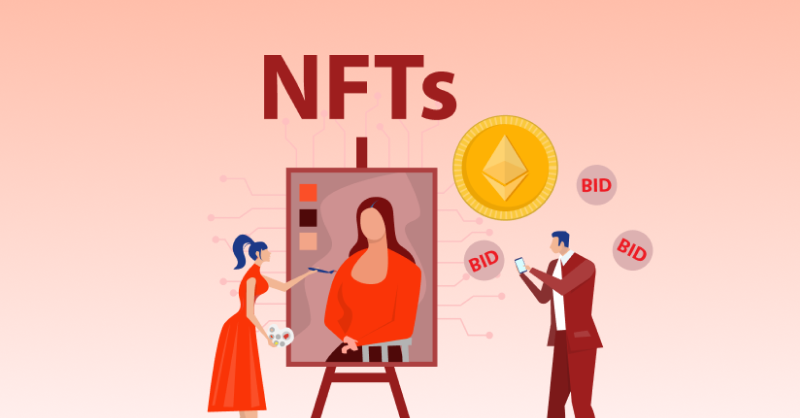The explosive growth of NFTs (Non-Fungible Tokens) has created a vibrant digital economy, drawing artists, collectors, gamers, and investors alike. Yet, one challenge persists—fragmentation. NFTs are scattered across multiple marketplaces, making it difficult for users to discover, compare, and invest in assets efficiently. Enter the NFT aggregator marketplace, a platform that unifies NFTs from various sources, streamlines discovery, and maximizes trading opportunities.
For modern crypto entrepreneurs, building an NFT aggregator marketplace is not just a technological venture; it’s a strategic move to capture a growing market. This guide offers a step-by-step approach to develop a successful NFT aggregator marketplace in 2025, covering market research, platform design, blockchain integration, and monetization strategies.
Understanding NFT Aggregator Marketplaces
Before diving into development, it’s crucial to understand what an NFT aggregator marketplace is and why it matters.
What Is an NFT Aggregator Marketplace?
An NFT aggregator marketplace consolidates NFT listings from multiple platforms into a single interface. Users can browse, compare, and purchase NFTs without visiting multiple marketplaces individually. These platforms typically integrate APIs from leading NFT marketplaces such as OpenSea, Rarible, SuperRare, and Magic Eden.
Key Features of NFT Aggregators:
-
Unified search and filtering: Compare NFTs across marketplaces by price, rarity, and type.
-
Portfolio tracking: Monitor owned assets in one dashboard.
-
Price alerts and analytics: Get notified of price changes and market trends.
-
Cross-platform trading: Facilitate purchases across different NFT marketplaces.
The aggregator model enhances user experience, increases engagement, and opens avenues for monetization.
Step 1: Conduct Market Research and Competitive Analysis
A strong foundation begins with understanding the market. NFT aggregators are relatively new, but competition is fierce. Leading platforms like OpenSea, Gem.xyz, and Genie have carved out significant user bases.
Focus Areas for Research:
-
Target Audience: Are you catering to collectors, artists, gamers, or investors? Each segment has distinct needs.
-
Market Trends: Identify trending NFT types such as PFP (profile picture) collections, gaming assets, metaverse land, and music NFTs.
-
Competitor Analysis: Study competitors’ strengths and weaknesses, user interfaces, and unique selling points (USPs).
-
Regulatory Environment: Stay updated on blockchain regulations, KYC requirements, and NFT taxation laws in your target regions.
A comprehensive market analysis ensures your aggregator addresses gaps that competitors overlook.
Step 2: Define Platform Architecture and Features
Once you understand the market, the next step is to outline your platform architecture and feature set.
Core Features to Include
-
Multi-marketplace Aggregation: Connect via APIs to multiple NFT platforms.
-
Advanced Search & Filters: Allow filtering by price, rarity, creator, collection, and blockchain.
-
Wallet Integration: Support popular crypto wallets like MetaMask, Trust Wallet, and Coinbase Wallet.
-
Analytics Dashboard: Provide insights into market trends, NFT performance, and portfolio valuation.
-
Price Alerts & Notifications: Enable users to track NFT prices and receive instant notifications.
-
Cross-chain Compatibility: Support Ethereum, Polygon, Solana, and other blockchains to widen NFT availability.
-
Transaction Security: Incorporate smart contract verification, two-factor authentication, and anti-fraud measures.
A clear feature roadmap helps streamline development and ensures a competitive edge.
Step 3: Choose the Right Blockchain Technology
NFTs rely on blockchain technology, and your choice affects scalability, cost, and ecosystem reach.
Popular Blockchains for NFTs:
-
Ethereum: The most widely used NFT platform; strong ecosystem but high gas fees.
-
Polygon: Layer 2 solution for Ethereum; reduces transaction costs.
-
Solana: Fast and low-cost transactions; growing NFT ecosystem.
-
Binance Smart Chain (BSC): Cost-effective and widely supported.
For an aggregator marketplace, multi-chain integration is essential to capture NFTs from different platforms. This requires expertise in blockchain APIs, smart contracts, and wallet interoperability.
Step 4: Develop Smart Contracts and Backend
The backend of an NFT aggregator powers data fetching, user authentication, and transaction processing. Smart contracts ensure secure and transparent NFT ownership.
Backend Development Steps:
-
Data Aggregation Layer: Fetch NFT data from various marketplaces via APIs.
-
Database Design: Store NFT metadata, user profiles, transaction history, and analytics. Use high-performance databases like PostgreSQL or MongoDB.
-
Smart Contract Development: Ensure NFT ownership transfers, royalties, and marketplace interactions are handled securely. Solidity (Ethereum/Polygon) and Rust (Solana) are common languages.
-
Security Measures: Implement encryption, API rate-limiting, and regular smart contract audits to prevent exploits.
A robust backend ensures real-time NFT updates, accurate analytics, and secure transactions.
Step 5: Design an Intuitive User Interface
User experience is critical in retaining NFT enthusiasts. Aggregator marketplaces must simplify discovery, comparison, and trading.
UI/UX Best Practices:
-
Unified Dashboard: Display NFTs from multiple marketplaces in one interface.
-
Visual Filters: Use icons and tags for rarity, collection type, and blockchain.
-
Wallet Management: Simplify wallet connection and transaction approvals.
-
Responsive Design: Ensure compatibility across desktop and mobile devices.
-
Analytics Integration: Offer graphs, charts, and price history to help users make informed decisions.
Investing in UX design can differentiate your platform from competitors and drive user loyalty.
Step 6: Integrate Third-Party APIs
NFT aggregator platforms rely heavily on third-party APIs for fetching NFT listings, market data, and price trends.
Key APIs to Consider:
-
OpenSea API: For Ethereum-based NFTs.
-
Rarible API: Supports multi-chain NFTs.
-
Solana API: Fetch NFT data from Solana marketplaces.
-
Crypto Price APIs: Integrate CoinGecko or CoinMarketCap for real-time crypto prices.
API integration ensures your marketplace stays updated with live NFT listings, prices, and transaction histories.
Step 7: Implement Payment and Transaction Mechanisms
NFT purchases involve cryptocurrency payments, so your platform must handle secure transactions.
Transaction Features:
-
Wallet-to-Wallet Payments: Enable direct crypto payments via MetaMask, Coinbase Wallet, and WalletConnect.
-
Fiat-to-Crypto Payments (Optional): Partner with payment processors to allow credit/debit card payments.
-
Smart Contract Escrow: Protect buyers and sellers by holding funds until NFT transfer is confirmed.
-
Gas Fee Optimization: Display estimated fees and suggest cheaper alternatives when possible.
Smooth transaction processes are vital to building trust with users.
Step 8: Incorporate Analytics and AI Tools
To empower users, NFT aggregators can leverage analytics and AI-driven insights.
Potential Features:
-
Price Prediction Models: Use AI to forecast NFT price trends.
-
Rarity Score Calculators: Quantify NFT rarity to aid purchase decisions.
-
Portfolio Insights: Analyze user holdings, ROI, and market exposure.
-
Market Sentiment Analysis: Evaluate social media trends and NFT community activity.
Integrating analytics adds value for users and enhances the platform’s credibility.
Step 9: Test and Secure the Platform
Testing and security are crucial before launching. NFT marketplaces are lucrative targets for hackers.
Testing and Security Checklist:
-
Unit and Integration Testing: Validate backend, APIs, and smart contracts.
-
User Acceptance Testing (UAT): Collect feedback on UI/UX.
-
Smart Contract Audits: Hire third-party auditors to check for vulnerabilities.
-
Penetration Testing: Simulate cyberattacks to detect weak points.
-
Compliance Checks: Ensure KYC, AML, and regional cryptocurrency regulations are met.
A secure and stable platform minimizes risks and protects users’ assets.
Step 10: Launch and Marketing Strategies
A strong launch strategy ensures your NFT aggregator gains traction in a competitive market.
Marketing Tactics:
-
Community Building: Use Discord, Telegram, and Twitter to engage NFT enthusiasts.
-
Partnerships: Collaborate with NFT creators, artists, and existing marketplaces.
-
Content Marketing: Publish blogs, tutorials, and NFT trend analyses to attract users.
-
Incentives: Offer discounts, referral bonuses, or early access perks.
-
Influencer Marketing: Leverage NFT influencers to promote the platform.
Marketing should continue post-launch to maintain growth and attract global users.
Step 11: Monetization Strategies
NFT aggregator marketplaces can generate revenue through multiple streams:
-
Transaction Fees: Charge a small percentage on NFT sales.
-
Premium Subscriptions: Offer advanced analytics, portfolio tracking, and early access features.
-
Advertisement: Allow NFT projects to promote collections on your platform.
-
Affiliate Partnerships: Earn commissions by directing users to partner marketplaces.
-
NFT Launchpad Services: Facilitate new NFT collections and earn fees.
Diversifying revenue streams ensures sustainable growth.
Step 12: Continuous Improvement and Scaling
The NFT market evolves rapidly, requiring continuous updates and improvements.
Key Actions:
-
Feature Updates: Add multi-chain support, new analytics tools, and wallet integrations.
-
Performance Optimization: Enhance load speed, database queries, and API response times.
-
Community Feedback: Regularly engage users to refine the platform.
-
Global Expansion: Support additional languages, fiat currencies, and regional marketplaces.
-
Security Enhancements: Continuously audit smart contracts and update security protocols.
A scalable, user-focused platform stays competitive and relevant over time.
Final Thoughts
Developing an NFT aggregator marketplace is a strategic opportunity for modern crypto entrepreneurs. By following this step-by-step guide, you can create a platform that consolidates NFT marketplaces, simplifies discovery, and enhances trading efficiency. From market research and blockchain integration to advanced analytics and monetization strategies, each stage requires careful planning and execution.
Success lies in building trust, providing value, and continuously adapting to the fast-moving NFT ecosystem. Entrepreneurs who master these aspects can position their NFT aggregator marketplaces as indispensable tools in the digital asset economy.



